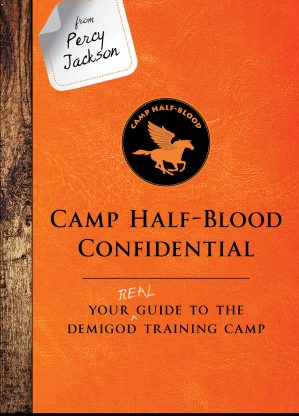Book Review: “Camp Half-Blood Confidential”
I am a huge fan of all things Rick Riordan. There has not been one book of his, whether Percy Jackson, Magnus Chase, or Carter Cane that I have not thoroughly enjoyed. Rick Riordan has used the ancient myths as the starting point for his stories and has no doubt educated more readers about the ancient gods of Greek, Roman, and Norse mythology than most college level classes. This fantastical world he created has the children of these gods in situations and events that involve them protecting the world from the callous actions of their parents. I also like how in the Riordan world, famous historical figures are often mentioned as being the children of the gods, which would explain why so many heroes of history have been lionized as god like.
Camp Half-Blood Confidential is the latest in the Riordan literary world. At a compact 147 pages, the book is not meant to tell a great tale about the established characters, rather it is a companion piece that expands on one of the most famous locations in Riordan’s Percy Jackson books, Camp Half-Blood.
A home and training center for the demigod children of the Ancient Greek gods, Camp Half-Blood is a place of refuge and education for the kids that discover they are children of Zeus, Poseidon, Athena, and others. If you have read any of the Percy Jackson books you know about Camp Half-Blood but we never learn much about the place - until now!
Camp Half-Blood Confidential is a collection of thoughts by campers who want new demigods to know what life is like at this Long Island retreat. Camp Half-Blood is not your typical summer camp. Demigods are protected by magical borders that humans cannot see. This camp is also open year round but is especially active during the summer months.
Percy Jackson takes the lead in writing this book, and with the contribution of other famous characters like Annabeth Chase, Nico de Angelo, camp activities director Chiron, demigods and non-demigods get a better picture of the camp.
The chapters are split up based on the areas of the camp. What makes the book unique is that with every area of the camp explored we get two perspectives on the site. For example, when housing at the camp is discussed, we get a tourist information brochure snapshot description from Pete the Palikos. Then a narrative from one character explores something particular about the area. When dealing with the cabins, Pete the Palikos gives us the high and low about the different cabins, but that is then followed with a chapter written by Annabeth Chase, and how she was able to expand and redesign the cabins for the demigods of all Greek gods and not just the important ones.
These little bits of narrative that would never be more than a one or two sentence mention in the major books are allowed to be explained in detail. The pattern is repeated throughout the book, where an area of the camp is explored and then a short narrative chapter describes something that happened to this particular author of the chapter in that area of the camp. Connor Stoll talks about how he was able to steal something from the Big House, in the Big House chapter, Malcolm Pace talks about being inspired by the Athena Parthenos statue when that area of the camp is explored, and so and so on.
Camp Half-Blood Confidential allows the characters that we either know really well, like Percy Jackson, or someone we may not know much about like Valentina Diaz to shine in a brief moment.
I highly recommend Camp Half-Blood Confidential to any fans of Rick Riordan’s mythical world. You will not only enjoy learning more about the greatest summer camp in the world, but it is also a lot of fun to read a book with my favorite characters that didn’t involve me worrying about them surviving to the end of the book.



